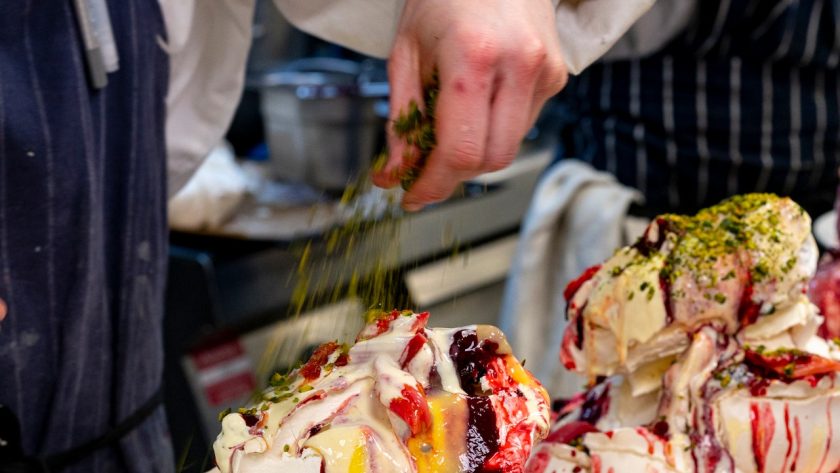Both Australia and New Zealand vie for ownership of the original pavlova, created to mimic the billowing tutu of visiting Russian ballerina, Anna Pavlova. But the rift over its origin is the only point of conflict surrounding this wholly lovable dessert. Like its cousin the meringue, a pavlova is made of puffy, cloud-like egg whites, swooshed into sculpture by sugar’s hold—but unlike meringue, a pavlova has a chewy, mallow center and is made at a shareable scale. Best, really, when accompanied by the clatter of spoons at the end of a long summer dinner party.
Recently, pastry chefs have been turning to the pavlova once again—and in doing so, creating a trend for more undone, whimsical cakes. The leap from tiered sponges topped with tempered chocolate rosettes to something a little rougher around the edges makes sense for pavlova, which, even in its most perfect form, resists symmetry. At London’s Quo Vadis, chef Jeremy Lee piles big swooshes of meringue with custard, cream, fruit compotes, and fresh fruit. Despite calling them meringue tumbles, Lee agrees that a recipe that produces a “crisp shell of a meringue and a very lovely soft inside,” is best. “That’s what we love madly,” he says.
Photo: Haydon Perrior / Courtesy of Quo Vadis



